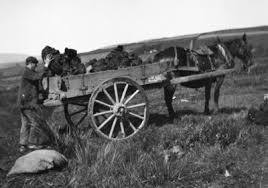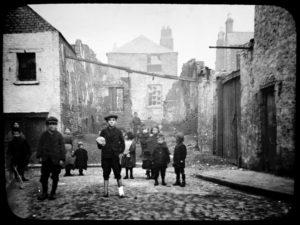The notion of Ireland brings together different opinions, though romanticizing has been very prevalent across artists, authors, and notorious people. J.M. Synge was an Irish author who spent time on the Aran Islands, recording his experiences and thoughts. Many of these thoughts were contained comments in which he romanticized the landscape, the people, and the lifestyle. Romanticizing a people is one story of how the author wants them to be, where Synge has decided the lifestyle he finds best. He refers to the way the people have been shaped into perfect humans due to their life on the islands, comparing them to animals. “The agile walk of the wild animal” is how he describes the people, treating them as more of a thing to behold rather than a human being. While this can be seen as a positive in form of the people and being opposed to normal negative aspects, Synge is choosing how to present the Irish people as a whole to the world. There is no diversity in this way of expression and it enforces that the people are simple, primal, and nature-oriented.

Eamon De Valera employs a similar tactic, treating the landscape as a catalyst for nationalism. He reminds the people of how the landscape is and can be if people return it to that beauty. Romanticizing a landscape can be dangerous though, as this then excludes all of the people who are poor and live in dilapidated cities. He describes the picturesque landscape of Ireland with rolling hills and unending green. These factors are lost on people who do not live that exclusive lifestyle. Acting as the leader of a whole group of people, exclusivity is brought only to some who agree. The power dynamic here is drawn from the Ideal Ireland as De Valera uses the beauty to keep nationality as the primary cause.

The image above of the boy in urban Ireland is important because the Irish Revivalists like Synge and Yeats mostly portray the ideal as being connected to an urban landscape. The Revivalists are searching for an ideal and in their search, they completely ignore an entire aspect of Irish culture. When thinking of the Irish ideal, the common thought is the beauty of landscape. The urban life has been lost in the search, putting the Revivalists in yet another single story category.
William Butler Yeats often does the same thing as De Valera, employing the beauty and simplicity of Irish life that only applies to some. In his poem, The Lake Isle of Innisfree, Yeats describes the return to this island in which he will live a simple but fulfilled lifestyle. As a romanticization, this can be considered negative because people who read his poem will imagine a united Ireland in this one sense. That united Ireland is a stereotype single story that is often expressed, that the simplicity is the key to an Ideal life. While this can be a fine opinion of a single person, presenting the opinion to readers who will succumb to the ideal is negative. The public may then see Ireland as ideal but they will also consider the people to be altogether simple, with a lack of any diversity or room for difference.
Something that both Yeats and Synge do is that they rewrite how certain views of the Irish are interpreted. As a stereotype, aspects such as mysticism, language, and a simplistic lifestyle have been considered wrong. They were motives for oppression because those aspects were uncivilized and the Irish were viewed as not being true humans or being treated in a human way. Yeats uses a significant amount of mysticism and Celticism in his works but this is the idealized version, moving towards a positive rather than a negative. These are virtuous and considered a value when Yeats portrays them. A similar view is how Synge idealizes the people of the Aran Islands. As discussed before, he has a view of what makes their bodies perfect. Leaving out whether this is negative or positive, the stereotype here has shifted from barbaric to an adapted to their environment people due to Synge’s works.
